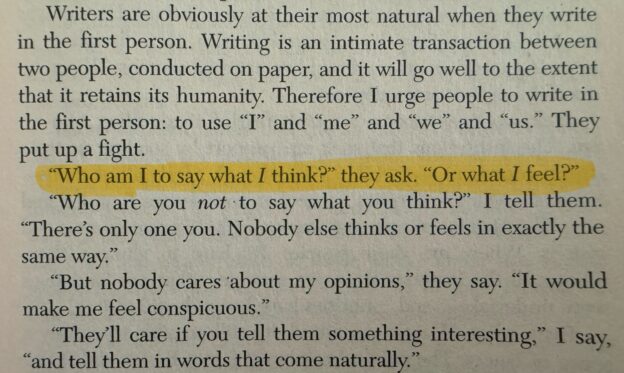I’m reading a book called Nonfiction Alchemy [affiliate link] by Jordan Ring that has some advice on finding a voice. A lot of it resonates with what I wrote in Writing as Yourself to Yourself. For example, in a section called Write with Heart, he advises you to “write like you speak” to find your voice, to tell stories because “they bought your book, not someone else’s”. But the part where he talked about his title and his voice was something I had not seen before:
I debated writing a more streamlined “business type” book with an unoriginal title like “Write Your Damn Book!” I thought about using straightforward chapter titles and letting less of my personality shine through. I summarily shut down this line of thinking.
He goes on to talk about how the word “Alchemy” is evocative and that he is using it to find other (more original) words to describe his ideas. He talks about spells and potions and elixirs, and it just makes the prose more enjoyable, original, and memorable.
It reminds me of an exercise from Writing Down the Bones by Natalie Goldberg [affiliate link]. I talked about it in my podcast episode, Finding Nouns and Verbs. Here’s how I described it:
Take out a piece of paper. Divide it into three columns. In the first column, write down any ten nouns. Then, fold back it over so you can’t see those nouns and look at the second column.
At the top of the second column write down an occupation. She gives examples like chef, pilot, or doctor. Then, for the occupation that you chose, list all the verbs related it. In the book, Goldberg picked chef and then wrote down cut, slice, fry, marinate, bake, boil, etc. Write down as many as you can think of. You don’t need to limit yourself to 10. In fact, try to come with a lot more than 10.
Finally, open up the paper. Now you can see both columns. A column of nouns and a column of verbs. Pick a random noun and then find a verb to go with it and complete the sentence.
This will get you thinking of and using concrete and specific nouns and verbs that exert themselves to describe your scene. You won’t need to rely on adjectives and adverbs as much, and when you do, they’ll have more impact.
Thinking along these lines, with my title now Swimming in Tech Debt and the central metaphor being a swimmer trying to go upstream and being thwarted by debt. In my book, I show how to use the existence of tech debt as a way to propel yourself. The payment of the debt gives you energy and joy that puts you in the flow and makes you go faster. Even the word “flow” serendipitously is related to swimming and probably belongs in the subtitle.
Using the Goldberg technique, I could make a list of verbs that describe what a swimmer does: stroke, push-off, flip, wade, coast, kick, etc. This is of course, a good use of ChatGPT, which is a kind of super-thesaurus. It says: Swim, wade, stroke, paddle, dive, float, glide, submerge, surface, tread, splash, flip, scull, plunge, sink, kick, sprint, roll, breathe, and relax.
The idea is to use those words in the text sometimes instead of the obvious one. Enough that it brings some life to the text, but not so much that it seems like a gimmick.

